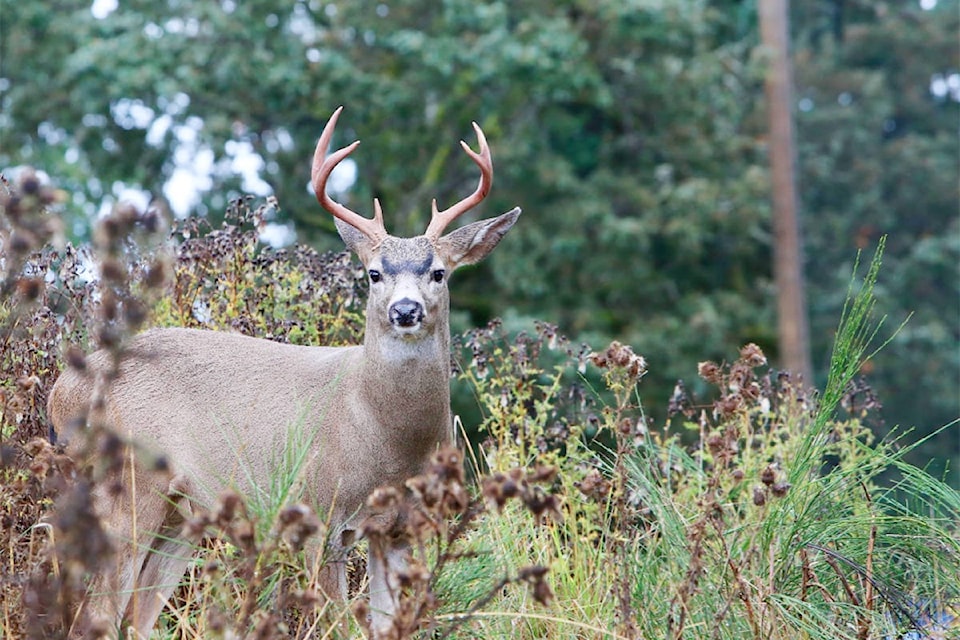As the weather turns cool, local bucks are looking to heat things up … and that can mean some single-minded behaviour.
In fact, during late-fall’s rutting season, any “street sense” bucks have developed is likely lost in a hormone-induced haze, says Kristy Kilpatrick, president of the Urban Wildlife Stewardship Society.
“Their behaviour can seem irrational, but really they’re just single-minded, so it’s important to be aware they can just run out. They’re not even seeing you, they’re just following a scent,” Kilpatrick explains. “If they see a doe or are following a scent, they’re not paying attention to anything else around them.”
With that in mind, its important drivers, cyclists and others pay attention, especially around dawn and dusk, when deer tend to be more active.
You might also see bucks rub their antlers on trees and fighting each other in demonstrations of strength that can be loud and seem aggressive.
While bucks are only interested in other deer, it’s best to keep your distance as you would with any wildlife:
- Give bucks extra space – Because a deer’s natural response to danger is to run, always leave it an escape route far away from yourself. Keep dogs on a leash and if you encounter a deer, keep your dog pulled in close to you, stop it barking if you can, and walk away from the deer to give it more distance. Always check your yard carefully for deer before letting your dog out.
- Watch the roadside – Pay extra attention and reduce speed, especially when driving in unfamiliar areas and at dawn and dusk. Scan ahead, looking for movement or shining eyes at the roadside.
- Pass carefully – Slow down when you see an animal to give it time to safely get out of the way. This also applies to cyclists, who should give themselves time and space to react to any unpredictable movement, Kilpatrick notes.
Photo contest: Vote for your favourites and support urban wildlife management!
The photo finalists for the inaugural UWSS photo contest are waiting for your vote.
Winning photos will earn a spot in the society’s 2020 calendar, and with voting by donation, you’ll help support local urban wildlife management.
Voting is open until Oct. 19 at 9 a.m. and everyone who’s voted by donation will be entered to win one of three voter appreciation prizes.
Oak Bay’s immuno-contraception project
The Oak Bay immuno-contraception program is funded by Oak Bay, the Province, and the UWSS. Although the field work is occurring in Oak Bay, this is a cutting edge research project that will provide important information to the Province, Esquimalt, and other communities in the region and farther beyond.
Esquimalt readies for third fall deer count
Esquimalt’s third annual deer count is coming up, part of research efforts to determine the community’s deer population.
“The count provides a general picture of deer numbers, densities and movement patterns. Without this research, it’s impossible to create a comprehensive deer management plan,” Kilpatrick explains.
For more information about deer initiatives in the Greater Victoria area and tips to reduce human-deer conflict, visit uwss.ca. Learn more about Esquimalt’s deer management initiatives at esquimalt.ca.
